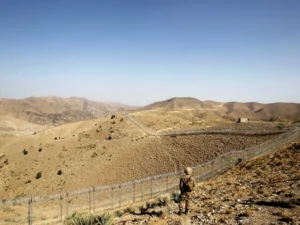In a surprising twist of fate, the Bhartiya Janata Party (BJP) managed to clinch victory in the recent Indian general elections, but only by a razor-thin margin. This election marks a significant shift in the political landscape of India, where the BJP, which has been a dominant force for nearly a decade, saw its influence waning dramatically. The party’s slim margin has raised questions about its prospects, with many analysts predicting that this could very well be the last time the BJP holds a leadership position. A very strong Congress is likely to act as a powerful opposition in Indian Lok Sabha.
A Decade of Dominance Under Threat
Since coming to power in 2014, the BJP, under the leadership of Prime Minister Narendra Modi, has enjoyed huge success, enjoying a strong mandate in the 2014 and 2019 general elections. The party’s emphasis on economic reforms, national security, RSS led Hindutva ideology and a strong nationalist rhetoric resonated with a significant portion of the Indian electorate. However, the 2024 general elections have painted a different picture.
The BJP won 240 seats out of a total 543 seats of Lok Sabha, just crossing the halfway mark required to form a government. This is a stark contrast to the 303 seats BJP secured in the 2019 elections. This indicates a loss of 31 seats and a significant reduction in its vote share from 37.36% in 2019 to 32.1% in 2024.
The Causes of BJP’s Declining Grip
Several factors that seem to have contributed to the BJP’s reduced majority and declining influence are:
- The unemployment rate in India reached 7.8% in early 2024, as reported by the Centre for Monitoring Indian Economy (CMIE). There was a significant rise from the 6.1% recorded in 2018, just before the 2019 elections. The BJP had promised to create millions of jobs, but the reality was that job creation remained sluggish. The lack of employment opportunities hit the youth particularly hard, leading to widespread disillusionment among the key voter demographic. Many young voters, who had supported the BJP in previous elections felt let down by the unfulfilled promises, thus turning to other parties in 2024.
- Inflation has been another significant issue. The Consumer Price Index (CPI) inflation rate averaged around 6.2% in 2023, which was higher than the Reserve Bank of India’s comfort zone of 2-6%. This persistent inflation, particularly in essential commodities like food and fuel, strained household budgets across the country. The prices of staple foods such as onions and tomatoes saw record highs, with tomatoes reaching as much as ₹100 per kilogram at various points in 2023. Fuel prices also remained high, with petrol and diesel prices hovering around ₹100 per liter in many states. Such exorbitant price hikes affected the daily lives of ordinary citizens, eroding their purchasing power and leading to widespread dissatisfaction with BJP Government.
- The Pradhan Mantri Kisan Samman Nidhi (PM-KISAN) Scheme, launched in 2019, aimed to provide financial support to farmers by offering direct cash transfers of ₹6,000 per year. While the scheme was well-intentioned, its implementation faced numerous challenges, including delays in payments and difficulties in reaching the most marginalized farmers. Moreover, the amount provided was seen as insufficient to cover the rising costs of agricultural inputs.
- The agrarian distress reached a boiling point with the farmer protests that began in late 2020. Farmers from Punjab, Haryana, and Uttar Pradesh, among other states, marched to Delhi to protest against three farm laws introduced by the BJP Government. These laws aimed to deregulate agricultural markets, allowing farmers to sell their produce outside state-controlled markets. Moreover, farmers feared that the laws would dismantle the Minimum Support Price (MSP) system and leave them vulnerable to exploitation by large corporations.
- Divisive policies, such as the Citizenship Amendment Act (CAA) and the National Register of Citizens (NRC), have alienated minority communities. The rise in communal incidents and the party’s association with right-wing extremism have further polarized the electorate. Prime Minister Narendra Modi’s rhetoric and actions have often been perceived as encouraging majoritarian sentiments. The BJP’s emphasis on Hindu nationalist sentiments while sidelining the minority concerns had alienated large sections of the population. This polarization has not only tarnished the BJP’s image but has also mobilized opposition forces, uniting diverse groups against the ruling party’s divisive agenda.
The Rise of Opposition Parties
While the BJP grappled with significant challenges, opposition parties seized the opportunity to regain lost ground, profoundly impacting the 2024 election results. Under the new leadership of Priyanka Gandhi, the Indian National Congress (INC) emerged as a formidable force, securing 99 seats, a marked improvement from the 52 seats won in 2019. The Congress’s emphasis on social welfare, inclusive growth, and robust campaigning resonated with a broad spectrum of voters. Regional parties also played a contributory role towards reshaping the political landscape. In West Bengal, the Trinamool Congress (TMC) led by Mamata Banerjee maintained its stronghold, winning 34 out of 42 seats. Banerjee’s effective regional leadership and grassroots mobilization successfully countered the BJP’s efforts. Similarly, the Dravida Munnetra Kazhagam (DMK) in Tamil Nadu, under M.K. Stalin, secured 28 out of 39 seats by focusing on regional identity and social justice issues, effectively resisting the BJP’s advances. Additionally, the Aam Aadmi Party (AAP), led by Arvind Kejriwal, made significant inroads in Punjab and Delhi, securing 20 seats. The AAP’s focus on education, healthcare, and anti-corruption resonated well with urban voters, further eroding the BJP’s support base. These developments highlight a dynamic and competitive political environment where opposition parties have successfully capitalized on the BJP’s vulnerabilities, challenging its dominance in the Indian political landscape.
The BJP’s slim margin victory in the 2024 elections is a clear indication that its political dominance is under serious threat. The 2024 elections have highlighted the party’s vulnerabilities and the electorate’s shifting preferences. As India moves forward, the political landscape is likely to become more intrigued and unpredictable, with multiple players vying for influence and power.




